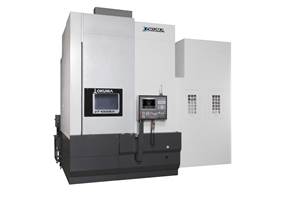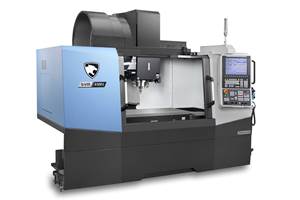So You’re in the Market for a Machine Tool—Start by Asking “Why?”
There’s nothing worse than buying a new machine that ends up neglected in the corner because it’s the wrong one for the job. Some key questions at the beginning of your search can help you avoid that.

In the market for new CNC machine tools, there is a wide variety and selection of machines, offered by scores of machine builders from around the world. Vertical machines, horizontals, lathes, gantries, routers, boring mills, screw machines, grinders—the choices are almost limitless. So where does one start, how does one decide, and what tools are available to assist a buyer through the process of purchasing a new machine?
There are many factors to be considered, and a lot of questions have to be asked and answered prior to selecting the right CNC machine. Answering these questions will help ensure a successful installation once a machine is purchased. There is nothing worse than buying a new machine tool and having it sit in the corner, under-utilized, because it is the wrong machine for the job. Yet, this does happen.
Start with Why
The first, seemingly simple questions that must be asked are:
- Why buy the machine in the first place?
- What is the buyer trying to accomplish in making this purchase?
Before selecting a machine type or specific model, it is necessary to first identify the specific job function or department for which the machine is being purchased. This will give a clear indication as to daily machine usage; lot sizes to be run; and requirements for fixtures and tooling, types of coolant, and tank capacity.
If the machine will be utilized in a job shop environment, the types of parts being machined will be numerous and varied in scope, with lot sizes ranging from one to 50 pieces. Similarly, toolroom or maintenance departments may see a wide variety of machine work but far more limited lot sizes, typically one to five pieces. Machines being purchased for a production environment, however, may be dedicated to machining one specific part or a family of parts. Production lot sizes may range from 100 to 1 million or more parts. Production runs generally have more stringent, dedicated workholding and fixture requirements.
Part-loading considerations are also driven by lot size. Hand loading, pallet shuttles or robot loading are some of the options. Tooling becomes more specific to a production run, whereas a standardized tool assortment works for the job shop. Coolant-tank capacity may need to be increased to handle longer run times for multiple work shifts. Toolrooms and job shops should think about a general-purpose coolant and a flexible delivery system.
Do Your Research
Inevitably, all machine buyers get to the point in the process of comparing machine types and machine models. Techspex.com, a free research center and analysis tool, can help anyone find the right machine for the job. This handy website database contains more than 500 machine tool brands with more than 8,600 models of every machine type imaginable—all in one place. Techspex maintains the deepest, most up-to-date machine tool information, whether the equipment is a milling, turning, grinding, EDM or coordinate measuring machine (CMM)—it’s all there. Simply enter the basic attributes and specifications that are required, and the system will provide a side-by-side comparison by machine type, model and builder.
This is part one of a three-part series about buying machine tools.
- Part two: Before You Buy That New Machine Tool, Consider the Workpiece
- Part three: Why Forming a Machine-Tool Buying Committee Is a Good Idea
Find more insights about acquiring a new machining center by visiting the Techspex Knowledge Center, “Guide to Buying Machine Tools.”
This blog post was adapted from an article by Barry Rogers published in the Machine/Shop supplement to Modern Machine Shop magazine.
Related Content
Vertical Lathe Executes Heavy-Duty, Long and Continuous Cutting
New VT1000EX Vertical Lathe from Okuma America Corp. possesses the capability to cut and machine difficult materials through, according to Okuma, its highly rigid, mechanical configuration, extreme thrust and torque.
Read MoreAdditive/Subtractive Hybrid CNC Machine Tools Continue to Make Gains (Includes Video)
The hybrid machine tool is an idea that continues to advance. Two important developments of recent years expand the possibilities for this platform.
Read MoreDN Solutions Introduces High-Productivity Vertical Machining Center
The SVM 5100L’s performance has been optimized to reduce the acceleration/deceleration times of the XYZ axes and spindle, reducing non-cutting time.
Read MoreTwin Spindle Design Doubles Production of Small Parts
After experiencing process stalls in the finishing stage of production, Bryan Machine Service designed an air-powered twin spindle and indexable rotating base to effectively double its production of small parts.
Read MoreRead Next
The Cut Scene: The Finer Details of Large-Format Machining
Small details and features can have an outsized impact on large parts, such as Barbco’s collapsible utility drill head.
Read More3 Mistakes That Cause CNC Programs to Fail
Despite enhancements to manufacturing technology, there are still issues today that can cause programs to fail. These failures can cause lost time, scrapped parts, damaged machines and even injured operators.
Read More







.jpg;maxWidth=300;quality=90)

















